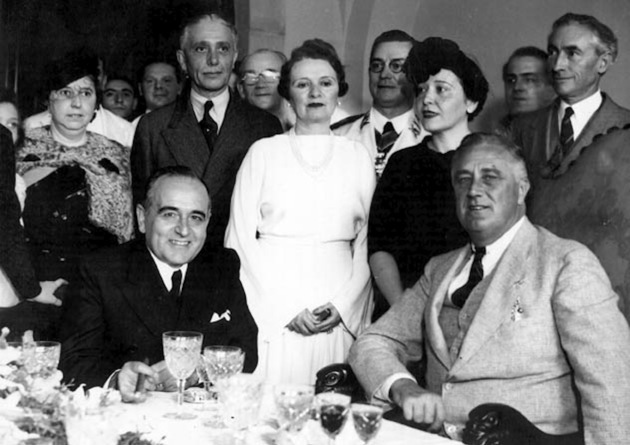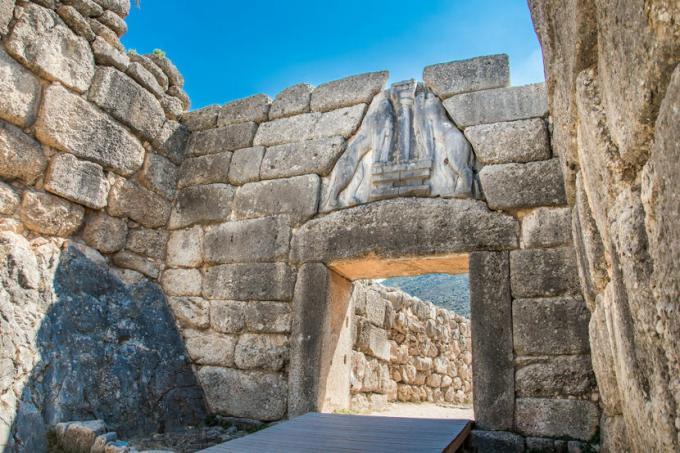THE Good Neighbor Policy was a US foreign policy for Latin America implemented during the Franklin D government. Roosevelt.
This strategy consisted of abandoning military intervention in the countries of the American continent and replacing it with diplomacy and cultural approximation.
Origin of the Good Neighbor Policy
The Good Neighbor policy aimed to change the interventionist image of the United States to that of a “good neighbor”.
Therefore, instead of attributing the right to intervene militarily in Latin American countries, the United States preferred to use diplomacy.
In this way, the Americans guaranteed the supply of raw materials and a market for their products, as Europe was in crisis because of the Crisis of 1929.
They also wanted to lessen Germany's influence on the mainland and thus secure an allied zone in this area that was so close to them geographically.
In this way, a group of businessmen begins to formulate a strategy of political approximation for Latin America, which will be adopted by the government of Franklin Delano Roosevelt (1933-1945).
The Good Neighbor policy aimed especially at Cuba, Venezuela, Mexico, Argentina and Brazil.
The Good Neighbor Policy and Brazil

The North American Good Neighbor policy coincided with the government of Getulio Vargas in Brazil.
Despite the Vargas government having fascist and nationalist leanings, the pro-American current ended up prevailing.
Getúlio Vargas negotiated loans with the Americans in order to modernize the Brazilian industrial park. In exchange, it guaranteed the entry of American products and the supply of raw material.
Likewise, in terms of foreign policy, Brazil, at first, declared itself neutral in the face of the war and, later, participated in the conflict.
It is important to remember that those who sympathized with the Nazism and fascism in Brazil were persecuted, as well as schools that taught in a foreign language were banned.
Good Neighborhood and Culture Policy

The most visible side of the Good Neighbor policy is the cultural.
Brazil was visited by great names in American culture such as actor and director Orson Welles (1915-1985) and Walt Disney (1901-1966). This would create the character Zé Carioca, a Brazilian parrot, who would be the host of Pato Donald in Rio de Janeiro in the film "Brazilian watercolor", with music by Ary Barroso (1903-1964).
In turn, several Brazilian artists such as Carmem Miranda (1909-1955) and the musician Hector Villa-Lobos (1887-1959) went to the United States to collaborate in the film industry.
Filmmaker Luiz Carlos Barreto (1928) also went to Hollywood to work as a kind of consultant, in order to see if the films made didn't "offend" the Latinos.
Carmen Miranda
The big star of the time was the singer and actress Carmem Miranda. The artist was already a phenomenon in Brazilian music and managed to win over Americans by participating in musicals on Broadway and numerous films in Hollywood.
It is criticized that she contributed to the stereotype of the Latin American who sings, dances and dresses in an exotic way.
Consequences of the Good Neighbor Policy
The years of the Good Neighbor policy left a deep mark on Brazilian culture, as the United States became the country's cultural reference.
Even eating habits were modified with the inclusion of beverages such as milk shake, soft drinks, hamburgers and other specialties of North American cuisine in Brazilian daily life.
The Good Neighbor policy ended after the end of World War II, in 1946. Latin America was not the priority of the Americans, as it was already considered sufficiently conquered in political and economic terms.
The continent would only be a target of concern again after the Cuban revolution, as there was fear that the region would pass to the sphere of influence of the Soviet Union.
Read about this topic:
- 1929 crisis
- new state
- It was Vargas
- Brazil in World War II
- North American Imperialism
- Women who made the history of Brazil
- Questions about World War II



